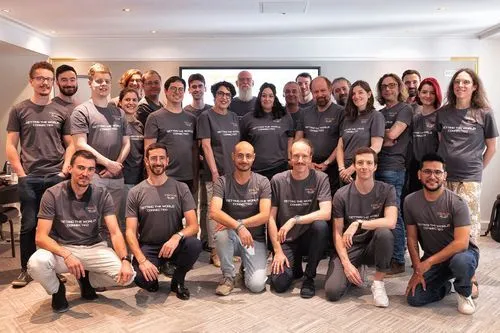Unattended Remote Support on macOS: Setup, Permissions & Security
Learn how to configure secure unattended remote support on macOS, from TCC permissions and MDM rollout to hardening, monitoring and compliance for IT teams.
Would you like to see the site in a different language?
RDS TOOLS BLOG
In today’s fast-moving business environments, Windows applications form the backbone of many organizations. Ensuring that these applications run efficiently and without interruptions is crucial for maintaining productivity and minimising downtime. Effective Windows application performance monitoring is key to identifying issues early, optimizing resource allocation, and ensuring seamless user experiences. This article outlines essential strategies, metrics, and advanced tools, with a specific focus on RDS-Tools Server Monitoring designed to help IT professionals, MSPs, and system administrators achieve top-tier performance in Windows environments.
)
In a landscape where every second of downtime can cost businesses significant revenue, waiting for problems to surface is no longer an option. Proactive monitoring allows IT teams to foresee potential performance bottlenecks, optimise server loads, and address system inefficiencies before they impact the end user.
In today’s highly interconnected IT environments, applications are expected to run 24/7 with minimal latency or disruption. When left unmonitored, even small issues—such as memory leaks or high CPU usage—can cascade into larger problems, affecting overall system performance and user productivity.
Reactive monitoring relies on fixing issues as they occur, often leading to downtime and frustrated users. In contrast, proactive monitoring enables IT teams to detect, plan for, and fix potential problems before users experience any negative effects. This approach also helps with capacity planning and resource optimisation, ensuring systems run smoothly even under high load.
Monitoring the right metrics is essential for maintaining an efficient and reliable application environment. Below are some of the core performance indicators on which IT professionals should focus:
Remote Desktop Services (RDS) environments, where multiple users rely on server-based applications, introduce unique challenges to performance monitoring. Ensuring efficient performance in these environments requires special attention to several factors:
In an RDS environment, multiple users share the same server resources. Monitoring each session's performance is crucial to ensure fair distribution of CPU, memory and network bandwidth. Poorly performing sessions can degrade the experience for other users.
Network reliability directly impacts application performance in any RDS environment. Monitoring network latency, packet loss and bandwidth usage ensures remote users experience smooth and uninterrupted access to applications.
A key element in proactive monitoring is setting up alerts for critical metrics such as CPU usage, memory consumption and network performance. By receiving alerts before thresholds are breached, IT administrators can intervene early, preventing widespread performance issues.
When it comes to monitoring Windows application performance, having the right tools can drastically simplify the process by offering real-time insights and automation capabilities. While basic tools like Windows Performance Monitor (PerfMon) can offer some insight, modern IT infrastructures require advanced, feature-rich solutions to handle the scale and complexity of today’s environments.
RDS-Tools Server Monitoring stands out as a comprehensive tool specifically designed for IT professionals managing RDS environments. This advanced monitoring tool provides deep insights into both server and application performance, making it a perfect fit for Windows application monitoring.
Even with advanced tools and strategies in place, IT administrators must avoid common pitfalls that can undermine monitoring efforts:
As IT environments evolve, so too must the tools and strategies used for performance monitoring.
Optimising Windows application performance requires a proactive, well-structured approach. From monitoring essential metrics like CPU and memory usage to leveraging advanced tools like RDS-Tools Server Monitoring IT professionals can ensure that applications run smoothly and efficiently. As infrastructure continues to evolve, staying ahead with advanced monitoring strategies will be key to maintaining a competitive edge in the industry.
Ready to optimize your Windows applications? Start by integrating RDS-Tools Server Monitoring into your infrastructure today for a free trial and experience the difference proactive monitoring can make.
Simple, Robust and Affordable Remote Access Solutions for IT professionals.
The Ultimate Toolbox to better Serve your Microsoft RDS Clients.
 Get in touch
Get in touch
